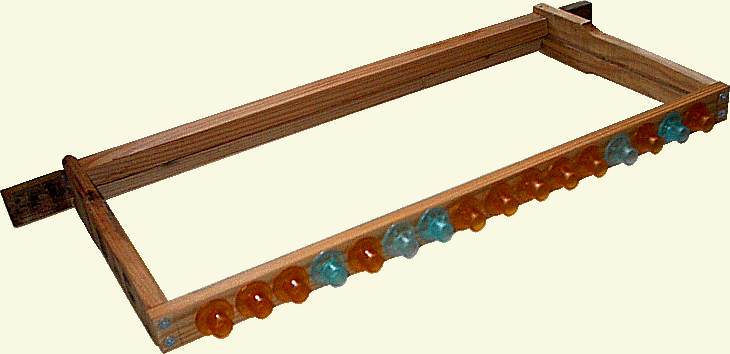|
|
|
|---|
Queen Cup Rim Size |
|---|
During early 2000 I had various Email conversations with Rex Boys. Some of the following text is Rex's.
Play cells, also known as queen cups, are the little cells that look like acorn cups, that appear as though the bees started building a queen cell, then changed their mind and curved in the entrance to be, what appears to be, the diameter of a worker cell. These cups are always around and become part of the furniture so it is easy to forget to look inside them but you do so at your peril because they are the real thing.
Ask yourself how the queen decides whether or not to fertilise the egg she is about to lay. There are various theories about how this is achieved, but the size of cell has a bearing on it. If the cell entrance is a loose fit, nothing happens and the egg remains unfertilised, producing a drone. If the fit is tight, it turns on the tap and automatically produces a worker. (Dac comment... This may be due to the amount of curvature of the queen's abdomen needed to reach the wall of the wider drone cell. The curvature causing a gap to open up as the egg passes so that fertilisation does not take place.)
Rex questions "In that case how do you get a fertilised egg in a queencell?" His reply "They start building a queen cell and when it is the length of the queen's abdomen, they bell in the end and make a worker sized entrance. Then one day, they lead the queen along to this cell and ask her to lay an egg. She thinks it is an ordinary worker cell and does not suspect what is really being planned."
The principle behind Rex's idea is that queen cups made on the bottom of a frame usually have the lip curved inwards. It was suggested by Rex that the smaller diameter that was created by this inward curvature was there to indicate to the queen that the cell was of a size in which a female egg must be laid.
I like Rex's theory... I have made a frame, illustrated right, that is only 178 mm deep with sixteen j/z - b/z grafting cups along the bottom edge pointing downwards. As the rims of these cups are rigid and are 9 mm diameter... If any queens are raised in them it will disprove Rex's idea, but it will not answer any questions about the movement of eggs by worker bees. I have thought that there may be some significance in the diameter of the curled rim of play cells, if Rex is right, I see three possibilities... |

|
|---|
- The curled rim diameter is a function of the cellsize that the bees developed in.
- It is a link to the "natural" size of that strain of bee.
- It is not relevant.
When the experiment takes place (summer 2001) I will record the outcome here.
Additional note... As of 2005 the experiment has not been performed, as I have not been physically up to it, but the test frame exists and can be made available to anyone that wishes to try this. Any answers or conclusions that can be gathered by conducting this test, may help towards projects mooted for the Santa bee research group.

Date of writing... Unrecorded, Revised... 28 May 2001 Upgraded with additions... 21 November 2005,
|